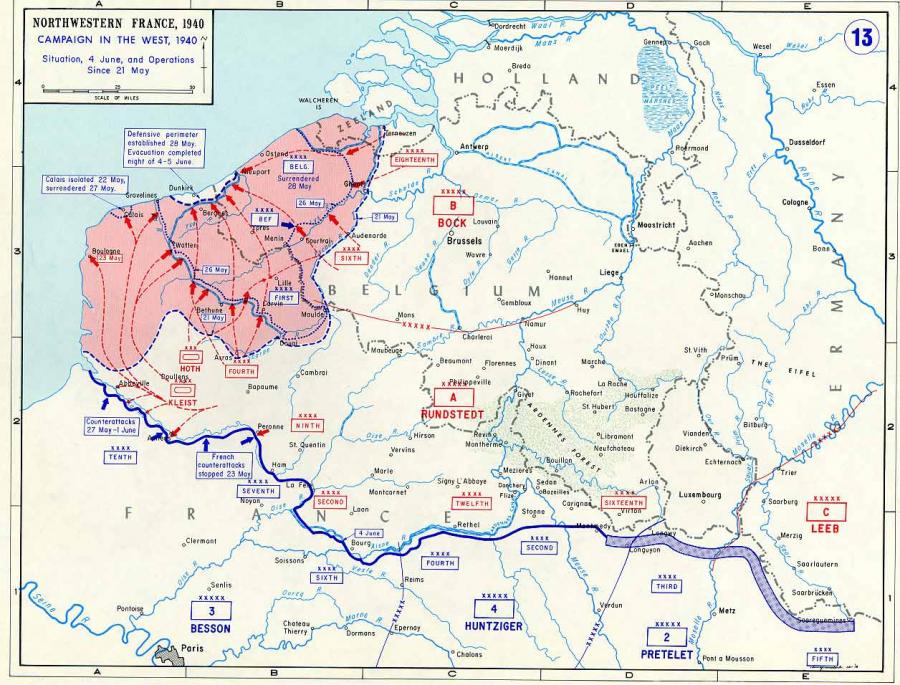Northwest Europe 21 May to 4 June 1940: Reducing Allied Pocket/BEF's Escape
After forging the enormous kessel trapping the cream of the Allied armies, including the entire BEF, the German spearheads sat immobilized by Hitler's 23rd May order to halt. Hitler's reasoning behind halting his rampaging panzer armies remains heavily debated to this day. Suffice it to say Hitler, having lacked a clear strategy for dealing with the British since the War had began, misjudged his opponent at Dunkirk. The British rescued approximately 338,226 British and Allied soldiers. Despite the successful escape, nearly all the equipment Britain brought to France sat abandoned on Dunkirk's beaches or in the French countryside including 2,472 artillery pieces, 63,879 vehicles, and hundreds of thousands of tons of ammunition, fuel, and other war material.
British material losses were compounded by the destruction of one of the world's premier armies when the Germans turned their attention south and forced the French surrender on June 22, 1940. Two million French soldiers marched into German prisoner of war camps. Nevertheless the individual French soldier had fought hard, in spite of poor leadership and tactics; at least 120,000 Frenchmen lost their lives in just six weeks fighting. The Belgians suffered just over 7,000 dead, the Dutch 3,000 killed in action, and the British lost only 3,457 dead in the campaign (although overall British casualties reached 68,111 including wounded, and captured). Germany's victory was far from bloodless; the Wermacht suffered 49,000 dead and missing and 100,000 wounded, however Hitler stood as master over nearly all Western and Central Europe.
Map Courtesy of: Department of History, United States Military Academy


